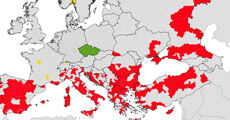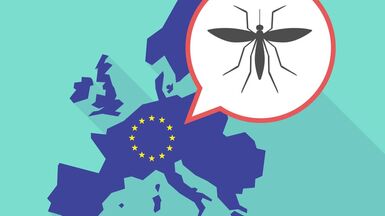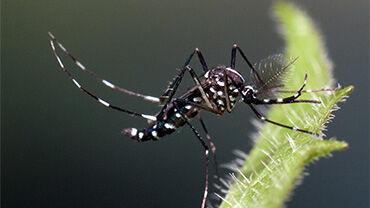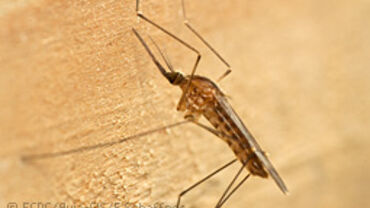Vector maps: New information on ticks in Europe. Invasive mosquitoes in new areas in southern Europe
New information on the geographical distribution of ticks and invasive mosquitoes in Europe is made available through the latest vector maps. The maps, which are updated quarterly, show the latest data on the geographical distribution of tick, phlebotomines and exotic mosquito species in Europe, as of July 2015.

New information on the geographical distribution of ticks and invasive mosquitoes in Europe is made available through the latest vector maps. The maps, which are updated quarterly, show the latest data on the geographical distribution of tick, phlebotomines and exotic mosquito species in Europe, as of July 2015.
What’s new in the tick mapsNew information on the geographical distribution (presence/absence) has been added to the Dermacentor reticulatus, Hyalomma marginatum, Ixides ricinus maps:
- Dermacentor reticulatus: updated information about 61 administrative units, mainly in Germany, France and Spain.
- Hyalomma marginatum: updated information about 35 administrative units, primarily in Romania.
- Ixodes ricinus: updated information about 366 administrative units, mainly in Finland, Germany and Poland.
In addition, the new maps show the presence of tick species in Europe in greater detail. The maps on Hyalomma marginatum - a tick species which can transmit serious diseases such as Crimean-Congo haemorrhagic fever (CCHF), now distinguish between introduction and establishment: a new category ‘introduced’ describes the presence of imported ticks and indicates that the species has been found but there is no evidence that it has become established locally.
New areas with invasive mosquitoes in southern EuropeTwo invasive mosquito species, important disease vectors, have been found in new areas in southern Europe:
- The mosquito species Aedes albopictus, a potential vector of dengue and chikungunya, is now present in new areas in northern and southern Spain, along the Mediterranean coast.
- The new maps show that Aedes koreicus, a mosquito that can transmit Japanese encephalitis, has been introduced around the Black Sea, while there is no evidence yet of the establishment of the species.
The maps are the outcome of the collaborative work of VectorNet and are based on collecting existing data by the network members. VectorNet is a joint initiative of the European Food Safety Agency (EFSA) and the European Centre for Disease Prevention and Control (ECDC), that started in May 2014. The project supports the collection of data on vectors, related to both animal and human health.
See and download latest maps on vector distribution (updated July 2015):







